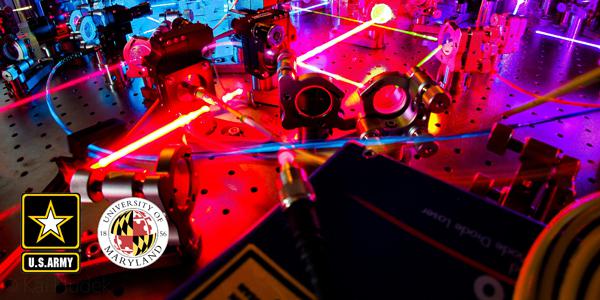Army Blends the Best Quantum Networking Worlds
U.S. Army Research Laboratory scientists and University of Maryland researchers recently published a study showing how they combined two different quantum technologies to produce a timing synchronization tool for future quantum networks, the Army has announced. The breakthrough could lead to a hybrid quantum network that combines the best features of different types of quantum systems.
The team demonstrated the first instance of photons emitted by a trapped ion interacting with neutral atoms. Army physicist Qudsia Sara Quraishi from the lab's Sensors and Electron Devices Directorate, along with University of Maryland postdoctoral researcher James Siverns and graduate student John Hannegan, demonstrated that trapped ion-produced photons and neutral atoms are compatible as quantum systems through the use of slow light particles known as photons.
Since each type of quantum system comes with its own strengths and weaknesses, combining different platforms will allow scientists to assemble distinct quantum networks that consist of only the best components of each system, according to the Army announcement.
Advancements in quantum communication and computation serve a vital role in ensuring mission success for the future warfighter, Quraishi says. By creating quantum networking tools, research in this field keeps the Army ahead of, and participating in, the latest developments in quantum networking technologies.
"Securing communications is vital for Army operations and this work seeds efforts in quantum networking by demonstrating a needed element in networking, tunable communication delay for synchronization," Quraishi said. "Prior to this work, delays would largely rely on optical fiber, which is not suitable for all Army operations. Connecting different quantum technologies together will extend the range of application, offer enhanced performance and bring disparate Army systems together."
Quraishi intends to continue her collaboration with the University of Maryland to further explore techniques to integrate various aspects of quantum systems together. "We hope to form a hybrid quantum network leveraging the differing strengths of each system involved," Quraishi said. "Such a hybrid network could be superior to one that employs only one type of quantum system."
You may also be interested in:





Comments